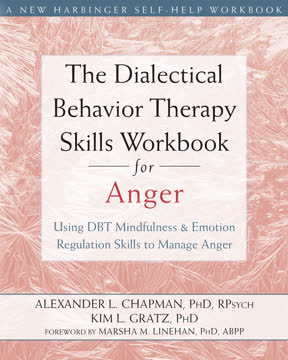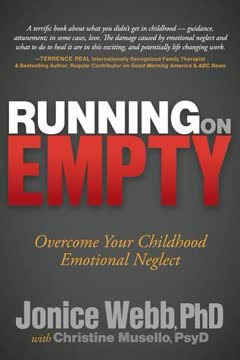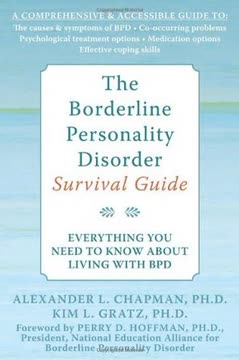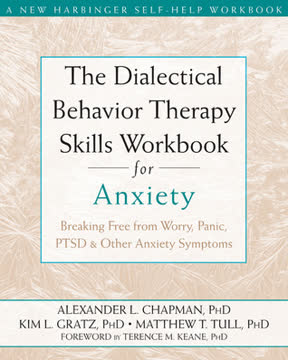Key Takeaways
1. Anger is a normal, temporary emotion, distinct from aggression.
The main point to keep in mind is that anger and aggression are not one and the same.
Universal experience. Anger is a universal human emotion, experienced across cultures and backgrounds, ranging from mild annoyance to intense rage. It functions like a sophisticated life-support system, signaling when something is wrong—such as a threat, mistreatment, or a problem to solve—and preparing the body for action. This natural response is temporary, typically flaring up and subsiding relatively quickly, unlike longer-lasting moods.
Emotion vs. Action. It's crucial to differentiate anger, an emotional state, from aggression, which involves harmful actions or statements. While anger can lead to aggressive urges, feeling angry does not necessitate aggressive behavior. People can act aggressively without anger (e.g., in sports) and feel intense anger without acting aggressively. This distinction offers freedom: just because you feel angry doesn't mean you must act destructively.
Body-brain response. Anger is a complex, whole body-brain response, not just a feeling in the "heart" or thoughts in the "mind." When anger fires, your brain, nervous system, muscles, heart, and blood chemistry are all involved, preparing your body for action (fight-flight-freeze response). Recognizing these physical cues early—like increased heart rate, muscle tension, or rapid breathing—is key to managing anger before it escalates.
2. Dialectical Behavior Therapy (DBT) balances acceptance and change for emotional mastery.
In DBT, the two opposing sides are acceptance and change.
Beyond CBT. Developed by Dr. Marsha Linehan for individuals with intense emotional suffering, DBT emerged from the limitations of traditional Cognitive Behavioral Therapy (CBT), which primarily focused on changing thoughts and behaviors. Linehan realized that for profound emotional turmoil, acceptance of oneself, emotions, and life situations must precede effective change. This dual focus on acceptance and change is the "dialectical" core of DBT.
Acceptance fuels change. The dialectical approach acknowledges that for every belief, there's an equally valid opposite. In anger management, this means accepting the reality of your anger problems (thesis) while simultaneously working to change them (antithesis). This acceptance is not resignation but a crucial first step that opens the door to practical strategies and coping skills, making meaningful transformation possible.
Four skill sets. DBT provides four core skill sets to help manage emotions like anger: Mindfulness (paying attention to the present moment without judgment), Distress Tolerance (getting through difficult situations without making them worse), Interpersonal Effectiveness (asserting needs and maintaining relationships), and Emotion Regulation (understanding and managing emotions). These skills are designed to help individuals tolerate intense emotions, understand their nature, and reduce their painful intensity.
3. Sustaining motivation to manage anger requires active, ongoing effort.
The bottom line is that motivation waxes and wanes.
Motivation fluctuates. Motivation, your drive to change, is not constant; it naturally fluctuates based on life situations, emotional states, stress levels, and self-care. Just as hunger changes, your desire to work on anger will ebb and flow. Recognizing this variability is crucial, as it prepares you to actively manage periods of low motivation rather than being derailed by them.
Ambivalence is normal. It's common to feel ambivalent about changing anger—liking some aspects of it or feeling others are to blame, while simultaneously recognizing its negative impact. This internal conflict can hinder sustained effort. DBT strategies help navigate this by weighing the pros and cons of anger-related behaviors versus the pros and cons of working on anger, clarifying the true costs and benefits.
Boosting commitment. To sustain motivation, actively engage in strategies like:
- Pros and Cons: Systematically list the advantages and disadvantages of your current anger management and of actively working on it.
- Awareness of Impact: Reflect on how anger interferes with your values and desired life, and visualize a life where you cope effectively.
- Public Commitment: Share your goals with trusted friends, family, or a therapist to increase accountability.
- Start Small: Break down large goals into manageable, two-minute action steps to build momentum.
- Encourage & Reward: Use cheerleading statements and reward yourself for small progress to reinforce positive change.
4. Understanding your unique anger patterns is the foundational step to control.
The better you become at pinpointing the situations and experiences that bring up anger for you, the more manageable your anger will be.
Identify your cues. Anger rarely "comes out of the blue"; it's always cued by something. The first step to managing anger is to identify your specific triggers. This involves describing situations objectively, separating facts from judgments or assumptions. Common cues include perceived threats, blocked goals, or physical/emotional pain. Recognizing these personal cues allows for proactive planning and intervention.
Recognize components. Anger, like all emotions, comprises physical, cognitive, and behavioral components. Becoming aware of these elements helps you recognize anger at lower, more manageable intensities. Physical signs might include a racing heart or muscle tension; cognitive signs, thoughts of unfairness or "shoulds"; and behavioral signs, urges to yell or act aggressively. Early detection provides more options for effective coping.
Mindful observation. Practice mindfully attending to your anger without judgment. This involves observing the physical sensations, thoughts, and action urges as they arise and pass, like waves on an ocean. This practice helps you realize that anger is temporary and that you can tolerate it without acting on destructive impulses. Regularly monitoring your anger in the moment, using tools like a tracking worksheet, enhances this awareness and mastery.
5. Reduce vulnerability to intense anger through proactive self-care and situation management.
When we are physically dysregulated, our emotions are more likely to be dysregulated too.
Mind-body connection. Your physical state profoundly impacts your emotional regulation capacity. Being tired, hungry, or ill depletes your emotional resources, making you more reactive and prone to intense anger. Prioritizing physical health helps lower your emotional baseline, providing more resilience to daily stressors and reducing the likelihood of anger escalating.
Self-care strategies:
- Manage Illnesses: Address physical ailments promptly to conserve energy.
- Balanced Eating: Eat regularly and nutritiously to maintain consistent energy levels.
- Adequate Sleep: Establish a consistent sleep schedule and good sleep hygiene to restore resources.
- Regular Exercise: Engage in moderate physical activity to build strength and release pent-up energy associated with anger.
- Limit Substances: Reduce alcohol and avoid drugs, as they impair emotional regulation and deplete physical resources.
- Increase Self-Efficacy: Engage in activities that make you feel competent and in control, reducing the need for anger to provide a sense of power.
Manage situations. While avoiding all anger-provoking situations is impossible, you can limit contact or modify them. Identify frequent triggers and plan ways to avoid them (e.g., altering commute times). For unavoidable situations, strategize to make them less distressing (e.g., listening to music in traffic, taking short breaks during difficult meetings). Proactive management reduces the frequency and intensity of anger experiences.
6. Mindfulness empowers you to observe and tolerate anger without destructive reactions.
Instead of being a helpless swimmer swallowed by the wave of anger, using mindfulness you can expertly ride the wave like a pro surfer.
The mindfulness flashlight. Mindfulness is an essential tool for anger management, illuminating the path out of destructive patterns. It involves paying attention to your present experience without judgment, helping you predict and prevent problematic behavior, regulate and tolerate anger, and avoid rumination that fuels its flames. This practice fosters a sense of freedom and control over your emotional responses.
Attending without judgment. Begin by mindfully attending to everyday experiences, like sipping a hot beverage or observing nature, to train your attention. When applying this to emotions, focus on the physical sensations, thoughts, and urges of anger without trying to change, push away, or cling to them. This objective observation helps you realize that anger is temporary and not inherently dangerous, fostering acceptance.
Riding the wave. A powerful mindfulness technique is to "ride the wave" of anger. When anger arises, step back and focus on its sensations, noticing its rise, crest, and fall without acting on urges. This practice teaches you that emotions pass and that you have a choice in your response. Even a brief pause can create enough space to choose an effective action rather than a regrettable one.
7. Distress tolerance skills provide strategies to prevent making angry situations worse.
It’s hard to make things worse when you’re not there.
Avoid destructive urges. Intense anger often comes with urges to act destructively, which can escalate problems and lead to regret. Distress tolerance skills are designed to help you navigate these overwhelming situations without exacerbating them. The core principle is to avoid acting on impulses that would worsen your situation, protecting yourself from negative long-term consequences.
Leave the situation. The simplest and often most effective distress tolerance skill is to physically remove yourself from the anger-provoking situation. This creates immediate distance, allowing your anger to subside naturally and providing time to think clearly. If a direct exit isn't possible, use polite excuses or even an abrupt departure if necessary, prioritizing de-escalation over social grace.
Distract and STOP. Once removed, distract yourself with activities that fully capture your attention, preventing rumination that re-triggers anger. This can involve:
- Engaging Activities: Physically demanding tasks, outdoor activities, work, or enjoyable hobbies.
- Mental Engagement: Solving puzzles, counting, or focusing on positive memories.
- Strong Sensations: Using intense tastes, smells, sounds, or touch (e.g., holding ice) to jolt your focus.
Alternatively, if you cannot leave, use the STOP skill: Stop what you're doing, Take a breath, Observe your experience, and Proceed mindfully, considering consequences before acting.
8. Opposite action is a powerful tool to reduce anger by intentionally changing behavior.
By doing the opposite of your angry urges, you can reduce your anger and deal with it effectively, just as slowing down and gently applying the brakes can help you get a car under control.
Breaking the cycle. Anger often "loves itself," meaning acting on angry urges (like yelling) actually intensifies the emotion, creating a vicious cycle. Opposite action breaks this cycle by directly modifying the behavioral component of anger. Instead of fueling the fire, you actively engage in behaviors that are incompatible with anger, thereby reducing its intensity and preventing destructive outcomes.
Steps to opposite action:
- Identify Emotion: Clearly recognize you are feeling anger (or related emotions like frustration).
- Assess Effectiveness: Determine if your anger is serving a useful purpose or if it's making things worse. Opposite action is for ineffective anger.
- Describe Urges: Pinpoint exactly what your anger is compelling you to do (e.g., lash out, confront aggressively).
- Choose Opposite: Select an action that is the direct opposite of your urge. Common opposite actions include:
- Gracefully leaving the situation (if the urge is to confront).
- Being compassionate and kind (if the urge is to be hostile).
- Adopting a relaxed posture and half-smile (if the urge is to tense up).
- Act Fully & Mindfully: Commit to the opposite action with your whole mind and body, letting go of judgments and fully immersing yourself in the new behavior.
Compassion over confrontation. When anger urges you to be hostile, practicing compassion and kindness is a powerful opposite action. This involves not just acting kindly, but also shifting your internal attitude by letting go of judgments and trying to understand the other person's perspective. This internal and external shift makes it difficult for anger to persist, fostering more effective and less damaging interactions.
9. Managing angry thoughts involves identifying and letting go of unhelpful thinking patterns.
The more you practice stepping back and being mindful of your thoughts, the easier it becomes to choose which thoughts to act on and which ones to let go of.
Thoughts fuel anger. Thoughts and anger have a reciprocal relationship: angry thoughts can trigger anger, and anger can fuel more negative thoughts, creating a vicious cycle. Identifying these unhelpful thinking patterns is the first step to breaking free from their grip and preventing anger from escalating.
Common angry thinking patterns:
- Rumination: Repetitively dwelling on the problem that caused anger, which intensifies it without solving anything.
- Judgmental Thinking: Categorizing situations, people, or yourself as "bad," "wrong," "unfair," or "shouldn't be."
- Making Assumptions: Attributing negative intentions or motives to others without factual basis.
- Blaming: Assigning fault to yourself or others for negative events, often oversimplifying complex situations.
- Extreme/Absolute Thinking: Viewing situations in black-and-white terms, using words like "always" or "never," and failing to see nuances.
Mindful detachment. Practice mindfully attending to your thoughts and letting them go. This involves stepping back and observing thoughts as mental events, rather than getting entangled in them. Techniques like categorizing thoughts (past, present, future) or visualizing them as train cars passing by can help you detach. This practice teaches you that thoughts are not commands; you have the freedom to choose whether or not to act on them.
10. Express anger effectively by asserting your needs with clear, nonjudgmental communication.
Sticking to the facts and avoiding judgmental language will help you communicate your anger more effectively.
Anger as a signal. Other people are often the source of anger, as their actions can block our goals or disregard our needs. When this happens, anger serves as a signal, providing valuable information about what you want or need. Expressing this anger effectively is a powerful way to regulate the emotion and potentially resolve the underlying issue, rather than letting it fester or explode.
Nonjudgmental language. To ensure others remain open to hearing you, use nonjudgmental language. Describe the situation objectively, sticking to observable facts rather than subjective evaluations or opinions (e.g., "When you raised your voice" instead of "You were rude"). This approach reduces defensiveness and invites constructive dialogue, as facts are harder to dispute than judgments.
Nonaggressive tone and script. Deliver your message with a calm, respectful, and nonaggressive tone and demeanor. Practice your delivery in front of a mirror or with a trusted person to ensure your body language and voice convey firmness without hostility. Develop a clear script that:
- Objectively explains the situation.
- Uses "I feel" statements to describe your anger (e.g., "I feel frustrated").
- Specifically states your needs and what you want the other person to do.
- Highlights how meeting your needs will benefit the other person (a "win-win").
- Includes potential compromises you are willing to make.
11. Actively manage the aftermath of anger with self-soothing and by addressing guilt, not shame.
The quicker you can recover from an episode of intense anger, the less vulnerable you’ll be to intense anger in the future.
Recovering from emotional toll. Intense anger takes a significant physical and emotional toll, leaving you depleted and on edge. Actively managing this aftermath is crucial for preventing future anger episodes. Self-soothing skills, which involve engaging your five senses with comforting sensations, help replenish your resources and return your body to a calmer state, acting as a preventative measure against future dysregulation.
Self-soothing techniques:
- Touch: Wear soft clothing, take a warm bath, get a massage, hug a loved one.
- Taste: Enjoy comfort food, sip a hot drink, savor dark chocolate.
- Smell: Burn incense, use scented lotion, breathe in fresh air or calming aromas like lavender.
- Sight: Look at pictures of loved ones, watch a sunset, observe nature.
- Sound: Listen to relaxing music, nature sounds, or children playing.
Focus fully on these sensations to ground yourself in the present moment.
Guilt vs. Shame. It's vital to distinguish between guilt and shame in the aftermath of regrettable anger actions. Guilt, a negative evaluation of specific behaviors, is helpful; it motivates apology, amends, and relationship repair. Shame, a negative evaluation of oneself as a whole, is unhelpful; it leads to self-hatred and hinders change. Focus on managing guilt by acknowledging consequences, apologizing sincerely, and actively working to repair and strengthen damaged relationships. For shame, use objective labeling and self-compassion to challenge self-condemnation.
Last updated:
Review Summary
The Dialectical Behavior Therapy Skills Workbook for Anger receives positive reviews, with an average rating of 4.20/5. Readers find it helpful for understanding and managing anger, especially through exercises on identifying triggers, developing scripts, and practicing self-restraint. The book is praised for its accessible content and practical strategies, including mindfulness and distress tolerance skills. Some reviewers note its usefulness in therapy settings, while others appreciate its insights on rumination and anger's underlying messages. Overall, it's considered a valuable resource for both personal use and professional application.
Similar Books
Download PDF
Download EPUB
.epub digital book format is ideal for reading ebooks on phones, tablets, and e-readers.











